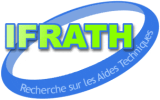Automatic assessment of motor function in patients with Spinal Muscular Atrophy: MFM-digital study.
Résumé
Results are encouraging to support the development of an automatized MFM. Additional work is needed to improve Kinect capture for weaker patient and to resolve interference problems. In study 2, MFM-Kinect protocol was included in a long list of tests during NatHis-SMA, witch could explain result differences between studies. The MFM-tablet results place the tablet in the assessment tools of the upper limb. The children showed a greater interest for the tablet application. The data supplied by the system MFM-digital bring additional data, in particular the timing of items' exercises and kinematic parameters which could refined the sensibility of MFM. We explore avenues of improvement of the system, in particular concerning the capture for weaker patients. The next step will be to use algorithms providing automatic scorings based on digital data and we are still looking for new digital technologies able to capture additional items.-Patients with Spinal Muscular Atrophy (SMA) type 2 or 3 (study1: 10 from the Escale department and study2: 14 from the NatHis-SMA study-NCT02391831) were included in the MFM-Kinect study. 14 items were scored by a therapist through standard MFM completion and from a blind scoring based on digital data coming from Kinect.-Patients with a NMD from 5 neuromuscular disorder departments were included in the MFM-Tablet study. Items 18, 19 and 22 were scored by a therapist through standard MFM completion on paper or using a digital tablet application. The Motor Function Measure (MFM), a validated and sensitive tool applicable to ambulant and non ambulant patients with neuromuscular disorders (NMD), is currently used as outcome measure in clinical studies. By using digital technologies, we want to create an automatized assessment based on MFM. The objectives are to improve the MFM reliability and its acceptability by turning the assessment into a serious game. Feasibility studies assessing the relevance of digital systems to capture postures and motions during a MFM test have shown that on 32 items of the MFM, 14 could be recognized by the Kinect and 3 by a digital tablet. Here we present preliminary studies to the conception of automated scoring systems. 119/140 records were interpretable. Some digital data were not analyzed because of capture problems with distortion skeleton, for example for patient with small amplitude movements or sitting on a wheelchair. On interpretable records, a great agreement between items scoring by a therapist and items blind scoring on captured digital data were found (75.6%). Differences between both studies concern as well concordance than interpretable capture. RESULTS MFM-DIGITAL TABLET 37 patients were included in the MFM-tablet (with inclusion still ongoing), with 11 DMD, 7 neuropathies, 6 SMA and 13 others. Median age of patients were 15.8 year [IQR: 9.4-43.8] and median of % MFM total score were 81.2 % [IQR: 59.4-87.5]. The agreement between scoring on paper vs tablet is excellent (κ> 0.81) for items 18 and 22, good (κ =0.61-0.8) for item 19. [1] Bérard C. et al. A Motor Function Measure for Neuromuscular Diseases. Construction and validation Study. Neuromuscul Disord NMD. juill 2005;15(7):463-70. [2] www.mfm-nmd.org. Interface mods KiMe2 a software developed by the G-SCOP laboratory to record Kinect data and analyze items. Kinect data recorded are converted into biomechanical observables on kinematic graphs and 3D reconstruction allowing the item scoring using different data (angles, distances…) ANALYSIS PROCESS MFM-KINECT e.g. item 15: Place both hands on the head Microsoft Kinect is able to identify a silhouette and its articulations in a 3D space (digital skeleton) without any markers ITEMS STUDIED IN THE MFM-TABLET MFM-Kinect results Study 1 Study 2 Kinect records (N) 83 57 Error of capture (%): impossible analysis 7.2 26.3 Identical scoring (%): therapist vs digital data analysis 81.8 64.3 Patients' characteristic Study 1 Study 2 MFM test records (N) 10 14 Age (year)-median [IQR*] 10.7[10-11.5] 20.7[8.2-23.5] SMA Ambulant/non ambulant 5/5 2/12 MFM total score (%)-median [IQR] 58.3[28.9-78.6] 58.3[46.6-62] % identical score between paper vs digital tablet Weighted Kappa Coefficient ITEM 18
Domaines
Mécanique [physics.med-ph]| Origine | Fichiers produits par l'(les) auteur(s) |
|---|

